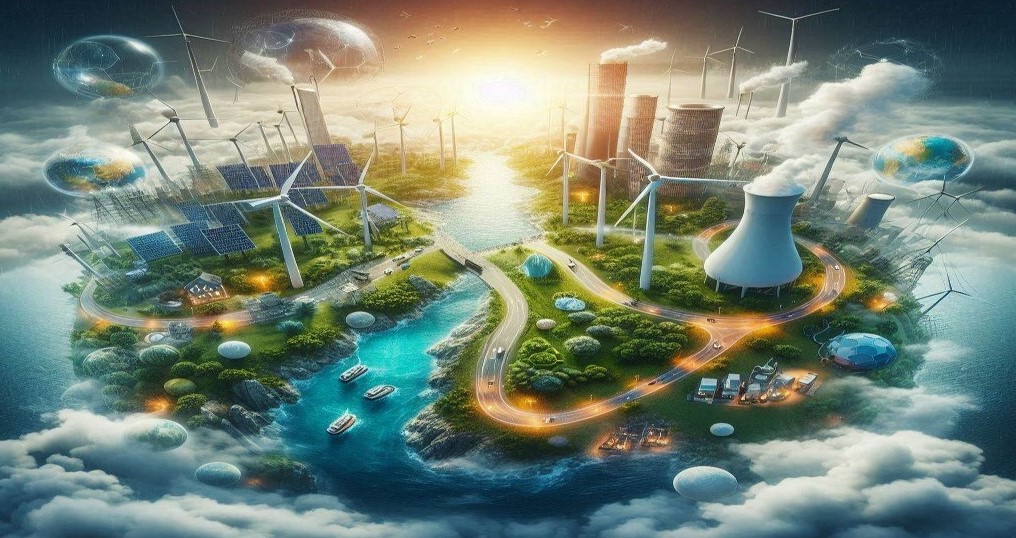One of the most critical challenges of our day is climate change, which significantly impacts the economy, the environment, and human welfare. The quantity of greenhouse gases (GHG) in the atmosphere is rising, mainly due to human activities like burning fossil fuels and deforestation. This has raised sea levels, global temperatures, and also reduced biodiversity. It may have also caused extreme weather events. Sometimes, on such bad days, you may want to simply read your favorite book, do some chores, or play at online platforms like the ICE Kasyno. However, the question is still up to date.
A multifaceted strategy incorporating behavioral adjustments, legislative interventions, and technological advancements is needed to combat climate change. Considerable technological progress has been made recently to reduce and prepare for climate change’s main effects. These developments, which range from carbon capture technologies to renewable energy options, have the potential to mitigate climate change and pave the way for a sustainable future.
These Technological Advancements: What Are They?
There is considerable conflict between zero-carbon technologies, which promise to prevent and reverse climate change but are largely unproven, and legacy technologies, which power our civilization but hurt the environment. We live in a meaningful time, even more significant than the Industrial Revolution. Such ages are always turbulent. The good news is that when collaboration and creativity are prioritized, chaos breeds progress.
Technologies for Renewable Energy
The development of renewable energy technology is one of the most significant technological advances in the fight against climatic change. The rise and cost-cutting of solar, wind, hydroelectric, and geothermal energy sources have made them increasingly competitive with fossil fuels. In particular, solar photovoltaic (PV) technology has advanced significantly, resulting in cost savings and increased efficiency.
Similarly, wind turbine architecture and design improvements have produced more giant, more effective turbines that can capture wind energy in various places. When these renewable sources are integrated into the electrical system, power security and resilience are improved, and greenhouse gas emissions are decreased.
Solutions for Energy Storage
One disadvantage of renewable sources, including wind and solar power, is their intermittent nature. Power storage technologies are essential to overcoming this difficulty. They store extra power produced during high production periods and release it during high demand or low renewable power source generation.
Grid-scale energy storage solutions are becoming possible thanks to advancements in battery storage technologies, such as lithium-ion batteries, and newly developed technologies like flow and solid-state batteries.
Carbon Storage and Capture (CCS)
Technologies like carbon capture and storage (CCS) can lower greenhouse gas emissions from fossil fuel-based power plants and industrial activities. CCS involves capturing carbon dioxide (CO2) emissions at the source, such as from industrial facilities or coal-fired power stations, and storing or using the gas underground.
Technological developments in CCS, such as more economical storage alternatives and effective capture techniques, enhance the technology’s viability as a climatic change mitigation strategy. Furthermore, technologies such as direct air capture (DAC) show promise in tackling emissions from hard-to-decarbonize sectors by extracting CO2 straight from the atmosphere.
Energy-Efficient Automobiles and Ecological Transportation
GHG emissions are mainly caused by the transportation industry’s burning of fossil fuels in automobiles, trucks, ships, and aircraft. If electric cars (EVs) running on renewable sources were to become widely adopted, transport-related emissions may be significantly reduced.
Electric vehicles are becoming affordable and have improved performance, range, and accessibility due to technological breakthroughs in battery technology, charging infrastructure, and vehicle economy. In addition, new developments in environmentally friendly transportation — like shared mobility services, electric buses, and bicycles — are changing urban mobility and cutting emissions in crowded regions.
Intelligent Grids and Energy Conservation
Improving efficiency is essential for reducing GHG emissions and steadily increasing energy systems’ sustainability. Innovative grid technologies, such as cutting-edge sensors, communication networks, and control systems in electrical grids, make real-time energy consumption optimization and monitoring possible.
Utilities can integrate renewable sources, control power demand, and reduce waste by implementing intelligent appliances, smart meters, and demand response programs. Energy-saving appliances, building automation systems, and passive design techniques all help to lower emissions and save energy in buildings.
Towards a Greener Future
Since global warming and climate change must be addressed urgently, a multifaceted strategy involving policy reforms and technical improvements is required. Technology has demonstrated its ability to significantly advance this effort, from enabling data-driven climate projections and green transportation options to supporting the broad adoption of renewable sources.
But it’s important to remember that technology cannot address the climate catastrophe alone. Sustainable lifestyles, conscientious consumption, and a shared dedication to protecting the environment for coming generations are all equally vital. By utilizing technology with group effort, we may achieve real progress in combating climate change and global warming.








